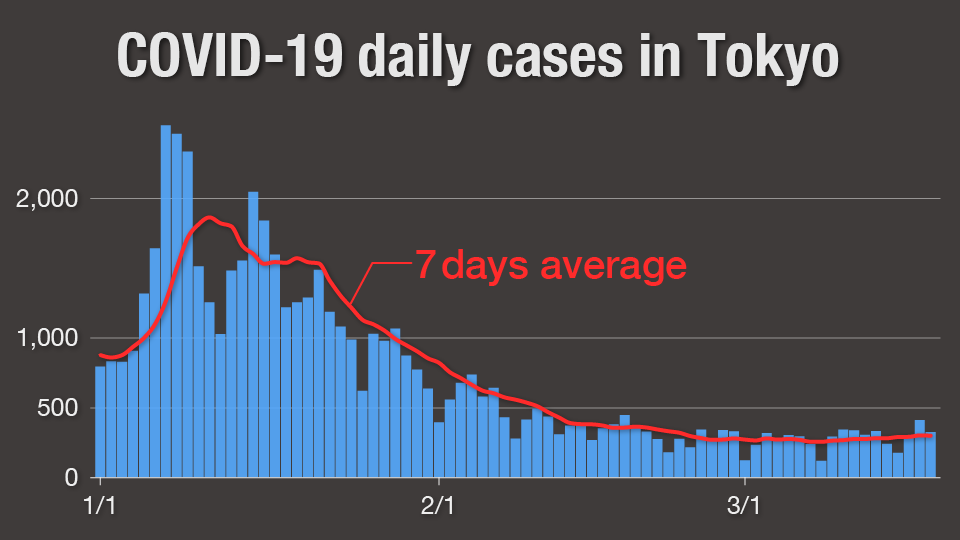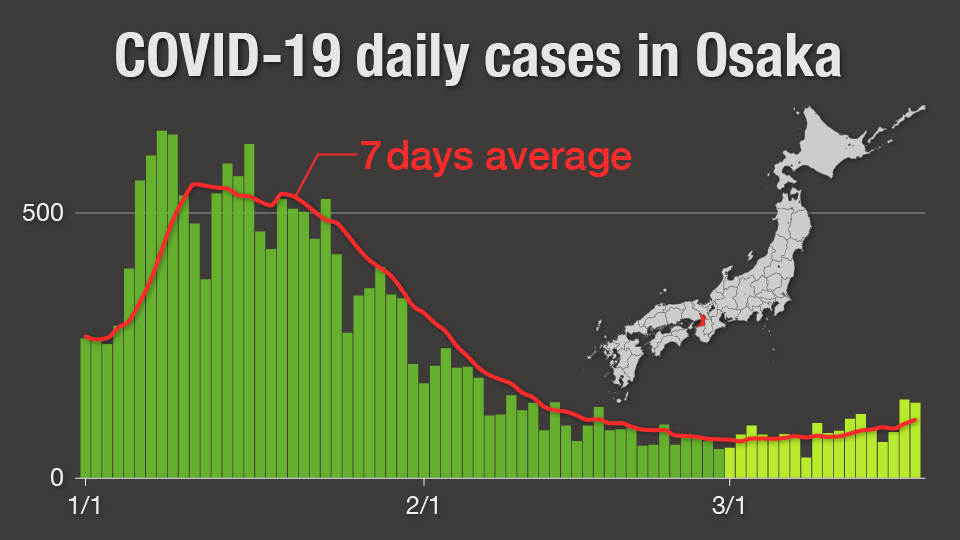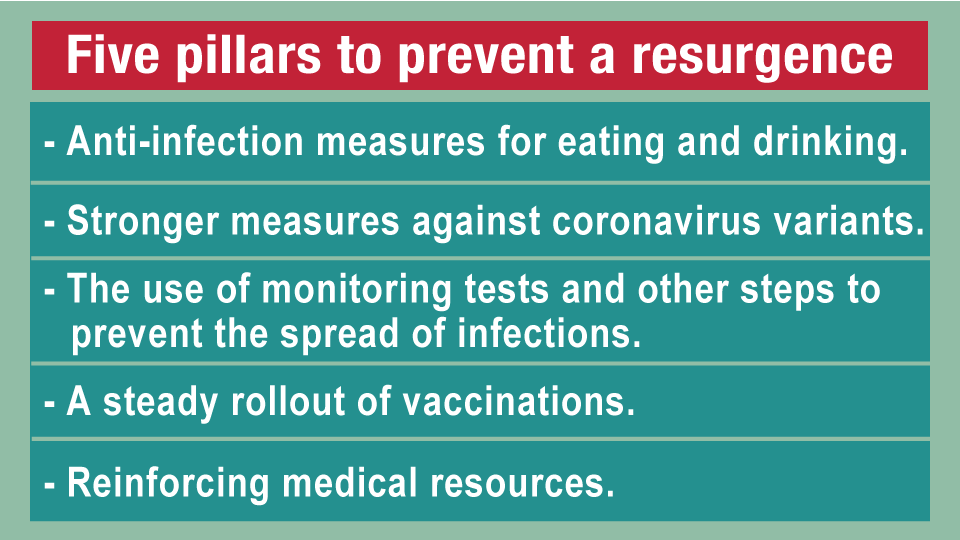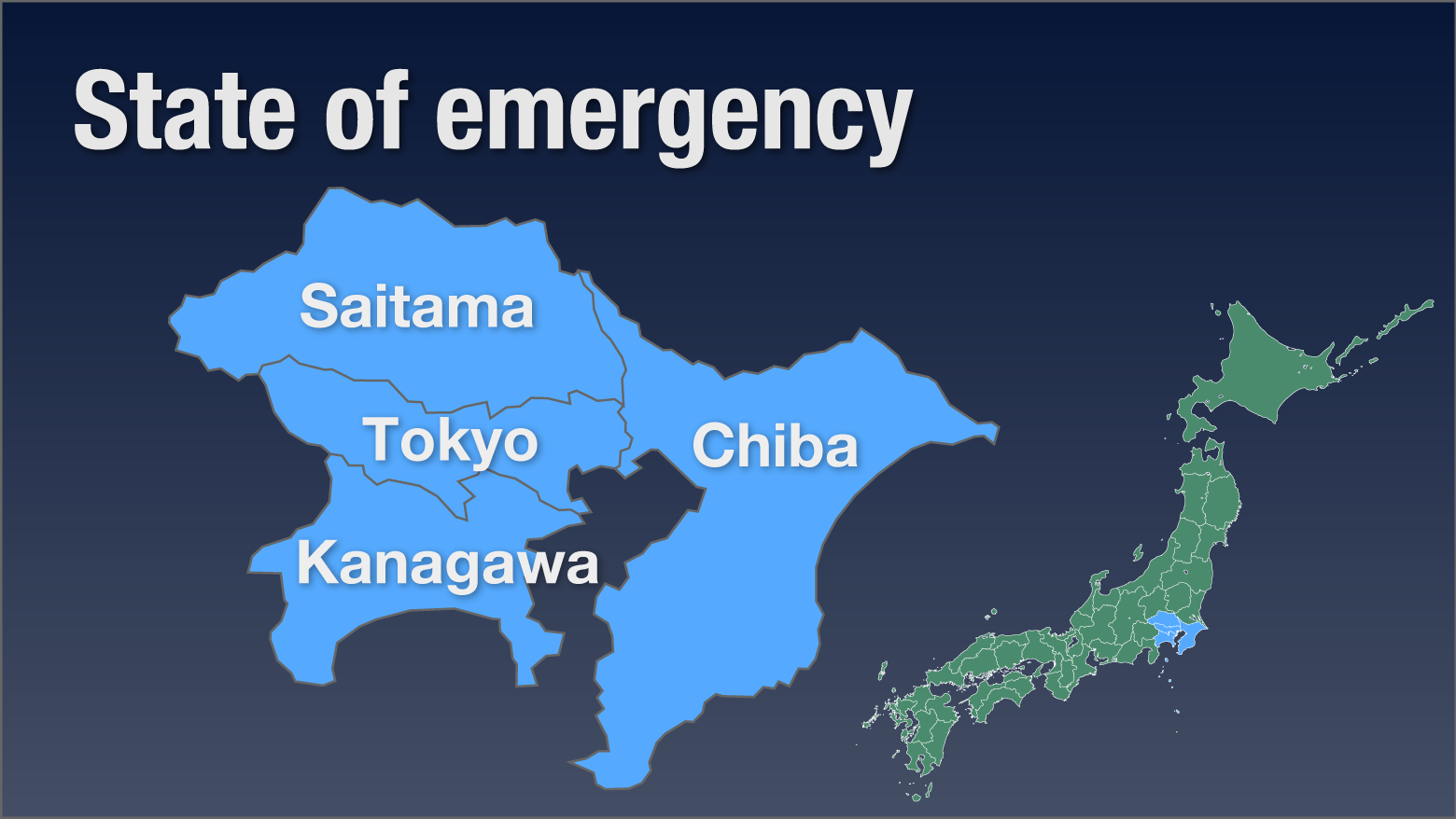“We've carefully examined the situation, including how the healthcare system is strained, and concluded that it meets the criteria for ending the state of emergency,” said Prime Minister Suga Yoshihide in a press conference on Thursday.
He added that the measure had helped to reduce infections in the area by more than 80% since it was implemented in January.

Easing, not ending, restrictions
Leaders in the capital and the three prefectures are planning to keep relaxed emergency measures in place to avoid a resurgence of cases. They will ask people to continue limiting excursions to essential outings only until the end of the month, and ask bars and restaurants to close at 9 p.m., one hour later than under the state of emergency.
The limit on audience size for events will remain at 5,000 or half the total number of seats if the venue’s capacity is greater than 10,000. Organizers will be asked to end events before 9 p.m.
Experience elsewhere in the country suggests fear of a resurgence is well founded. Osaka lifted its emergency declaration on February 28 and infection rates have been creeping up since, reaching 141 new cases on Thursday. The prefecture was planning to allow bars and restaurants to resume normal operating hours on Sunday but will now ask owners to maintain shortened hours until the end of the month.

Director of Disease Control and Prevention Center, Omagari Norio, says the possibility of a resurgence is particularly high right now because of upcoming seasonal events, such as cherry blossom viewing parties, company welcome and farewell dinners, and graduation trips. He adds that mutated strains of the virus are also adding to the risk.
“People should be fully aware that cases could increase sharply after the state of emergency is lifted, and they should take thorough precautionary measures against the coronavirus,” Omagari says.
Five pillars to prevent a resurgence
The national government has come up with what it calls “five pillars to prevent a resurgence,” which it will implement in collaboration with local authorities.

The owners of bars and restaurants will be asked to follow all guidelines to prevent infections, and authorities will act more urgently to stamp out infection clusters.
The government will do more screening for mutated version of the virus. They currently examine 5-10% of new cases, but will increase this to around 40%. They will also work with private laboratories and universities to improve genome analysis methods.
To ease the pressure on the healthcare system, officials will review existing coronavirus testing methods, and secure more hospital beds or accommodation facilities for recuperating patients.
On vaccinations, Suga said the government expects to secure at least 100 million doses by June. He promised to provide detailed information to ensure people can receive the shots without worry.
Watch Video: 1:26


